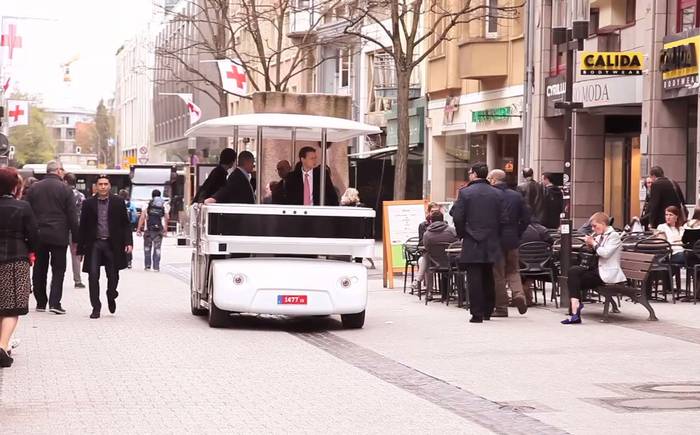CES 2014: World’s first driverless vehicle is just as Isaac Asimov predicted 50 years ago
The car of 2014... predicted in 1964

FIFTY YEARS since it was first predicted, a driverless vehicle has gone on sale that can guide itself harmlessly through crowds of people.
In 1964, the science-fiction writer Isaac Asimov visited the New York World’s Fair from where he was inspired to write his predictions for 2014, 50 years hence. Among the many ideas he proposed were vehicles with what he called “robot-brains”; what today we call “autonomous vehicles”.
Asimov predicted that such vehicles would have their “brains” set for particular destinations and would “proceed there without interference by the slow reflexes of a human driver”. He imagined that one of the major attractions of a World’s Fair in 2014 “will be rides on roboticized cars which will manoeuver in crowds, neatly and automatically avoiding each other.”
By an uncanny coincidence, just such a vehicle has been launched at the Consumer Electronics Show in Las Vegas. The world’s first commercially driverless car is guided by on-board lasers which detect obstacles in its path. Video shows the Navia moving around crowded areas such as city streets and airports. It is also expected to be used in university campuses, stadiums and arenas.
The vehicle, built by French manufacturer Induct, can carry eight passengers and has a maximum speed of 12.5mph. With a price of £152,000 it is unlikely to displace the humble family car but it could provide fresh impetus to rivals such as Google and GM who are also developing driverless vehicles.
Meanwhile, Asimov’s other transport predictions, while not wholly accurate, did at least hint at an understanding of the problems drivers of the future were likely to face. For example, he believed traffic “would continue” only because all car parking would be off-street. From this, we can deduce he sensed the number of vehicles would rise to unsustainable levels, and only fell short of predicting the rise of the high-tech traffic warden and their draconian penalties.
Meanwhile, the writer and scientist, who was born in Russia in 1919 and died in New York in 1992, also predicted the decaying state of our roads when he wrote that “jets of compressed air will lift land vehicles off the highways, which, among other things, will minimise paving problems.”





